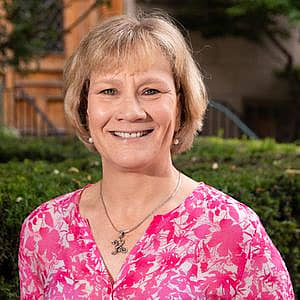For the record, I grew up a free-lunch kid from a public school in NJ. I had no idea about boarding schools other than to suspect that if someone was “sent” there, there was a problem or something was wrong. As I completed college and entered the workforce, my career path was focused on education as a coach and teacher in college and later in boarding schools. Slowly, I began to see exactly what went on at these places and realized that another world existed in the arena of education and I was drawn to enter the mix away from college coaching and teaching.
I remember my first day as a faculty member at a junior boarding school. The parents were saying their final good byes – there were lots of tears. I remember thinking, “Who would send their kid away this young?”
The next day I was stepping into my first morning meeting, music rocking the theater and students were scrambling to find their seats and assure that ties were tied and blazers were on before the start of the meeting. Each class was getting organized in their seats and the upperclassmen were jockeying for position behind the podium in order of their announcement schedule before the music halted and the event officially began.
One by one, I greeted my advisees, all boys, to assure they were in dress code, and that they were ready for the day. Obviously there was a scramble to put ties on, get shoes tied and blazers intact.
“Ken, do you have your planner? Is your meeting with Mrs. McMillan scheduled for today? Remember to turn in your weekend sheet.”
“Ray, make sure you put your instrument in the band room during break. For now, you can leave it in my office.”
“No, William, you can’t go back to the dorm to get your sports bag. Dorms are closed. Ask Mr. Clark for a pass during break to retrieve your stuff and take it to the locker room. Don’t be late for class.”
Finally, after organizing my young advisees, the meeting was called to order. It was time to recognize and celebrate student and faculty birthdays. Already I realized that these important details were not left to chance. The community shared in the excitement and concerns of the day or week. This ritual, experienced at least twice a week, was a way to energize, engage, acknowledge and inform everyone of daily happenings while creating a spirited and respectful environment.
Randomly throughout the day, my young advisees would drop by my office. Not to see me, mind you, but because I always had juice boxes, water and Scooby snacks to help get them through the day. They often brought their friends, as it was now widely known throughout school that Coach C. kept a stocked fridge.
It was during these small breaks that many of my one-on-one relationships began to flourish with these young boys and girls as they adjusted to time away from home and a different schedule to their day. Quite often I would hear about a sick pet, or how they were missing friends back home. Other times I would listen to them share with me how soccer was going for them or they might ask me if I would be going to the concert to see them play trumpet, or watch the next play. It was hard to be everywhere to be sure I was present for them, but I did my best to let them know that “I saw everything.” In fact, I often introduced my cherubs, as I called them, to the word omnipresent. In part, to let them know that I was keeping an eye on them to be sure nothing slipped through the cracks, but mostly they knew that they could always rely on me to help them, even when they didn’t know they needed it.
There was the daily and somewhat formal interaction with all the students throughout the day. But perhaps what I treasured the most were the times when students were gathered in the dorm on a weekend night to watch a game or movie. Times spent Sunday evenings trying to help them to get their rooms organized and laundry in their bags also provided some candid and meaningful moments. Before lights out, there was always a mad scramble to get teeth brushed, clothes ready for the next day, and dorm duties completed, all before the evening floor meeting with the dorm family on duty.
Life was not always that simple, however. While students were embraced as the center of the school community, “stuff happens.” Students do get in trouble. There are roommate battles, technology violations, and flat out disruptions. This is all a natural part of the adolescent behavior profile and developmentally, something well understood by adults in the school environment. Students are held accountable, as are the adults, but together, the life lessons continue along with the science, math, languages and all academic topics.
There are also those times that family dinners allow students to share quality time with teachers and other students while passing the mashed potatoes and chicken. The end of the meal brings dessert, announcements and student jobs like clearing tables, sweeping floors and readying the tables for breakfast.
Outside the often insulated confines of the school environment, “stuff” also happens that impact students. Experiencing absolute protection from life events as a member of a tight-knit school community is a misnomer. Students still see and feel the impact of events such as a family death, news reports, civil and political unrest, and natural disasters among other things. These are the teachable moments that boarding schools capably embrace to help teach life lessons and manage the emotions of a community – these lessons last a lifetime.
At the end of my first year, serving as a teacher, coach, administrator, advisor and mentor to young students, and witnessing many necessary and unnecessary trials and tribulations experienced by my cherubs and the entire school community, I know why someone would send his or her son or daughter to a boarding school. The delicate balancing act, which was the life of the school, included paintball and oil paint, Western civilizations and water polo, community service and chapel service, football and French, technology and tennis, and any number of offerings that are meant to expand and enhance the well-being of a student.
So when someone asks you, “You sent your kid where?” You can answer, “To a community that will embrace my son or daughter for who they are and help them find out the many wonders of the world.”


